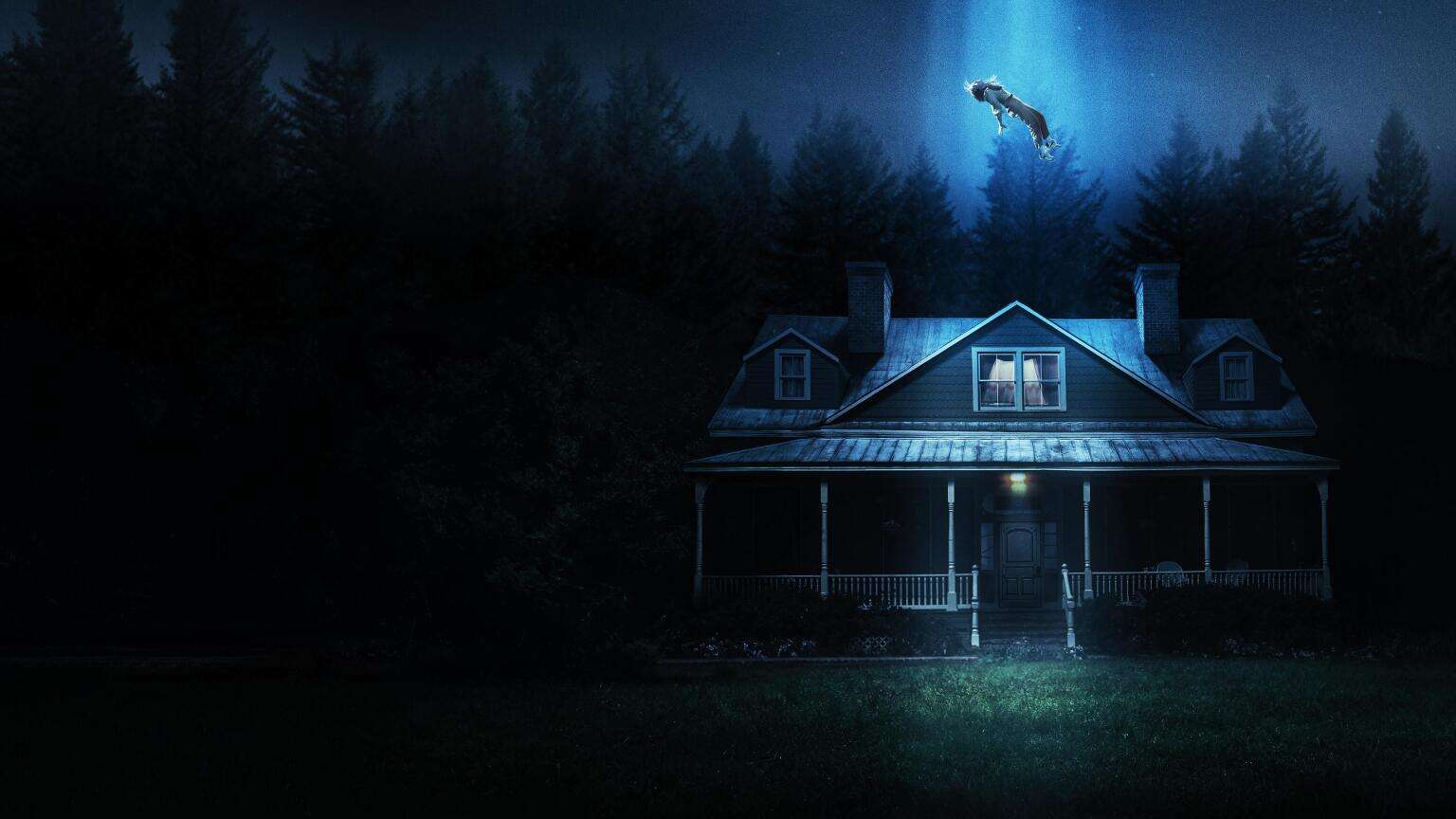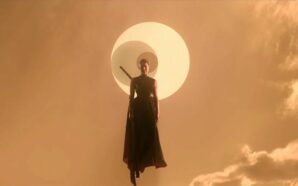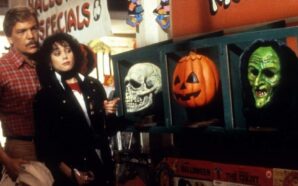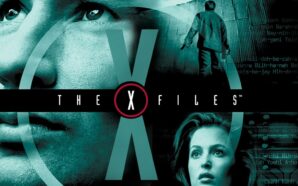This article contains spoilers for all aspects, including the ending, of No One Will Save You.
Hulu is beginning to carve out a nice little niche in the streaming landscape with their recent sci-fi horror offerings. It seems to be becoming the place for lower budget genre films to shine rather than being lost in the tumult of theatres. Last year it was Prey, a genuinely great and refreshing return to the Predator franchise, and now this year it’s the more-original-than-it’s-post-Get-Out-generic-title-would-suggest No One Will Save You. I went from never hearing about this movie one day and then suddenly having it pop up on the Disney+ homepage (in the UK) the next, and it has become one of my favourite films of the year.
There’s much to make of the film’s ending, its aliens, its characterisation, its lack of dialogue, but really, at its core, the film succeeds by being just a great, tight, 90-miniute suspense picture. It’s thrilling more than it is scary but it plays its alien abduction/home invasion cards well. Even when reduced to a basic chase sequence or a hide-under-the-bed-and-don’t-make-a-noise scene that we’ve seen a million times before, No One Will Save You executes it all so effectively and efficiently, aided by a wonderful near-silent performance by Kaitlyn Dever. It’s engaging, not just because of its bolder, more notable aspects. It’s nice to just watch a competent, unashamed genre movie like this.
But the film’s lack of dialogue does set it apart, and after hearing about it before viewing the film, I was worried it would be a bit of a gimmick. Yes, there are a couple of moments where it feels a little unrealistic that characters aren’t speaking, but overall it serves a brilliant purpose. Not only is it one way to show how Brynn is alienated herself, cut off from humanity, but it’s also a way to cut off the audience from what’s happening too. To keep us alienated, making those of us watching part of the thematic topography.
The extraterrestrials can’t understand what the humans are saying, the humans understand what the extraterrestrials are saying, and the audience can’t understand either. Like all the characters in the film, whatever species, the viewer is having to watch and pay attention and infer and, ultimately, work out what happened in Brynn’s past, and her present thoughts on it, at the same time the aliens do. Likewise, we work out how the aliens feel about it alongside Brynn. The lack of dialogue alienates the audience and then, when the characters become less alienated, connect, so do we watching. It’s brilliantly done.
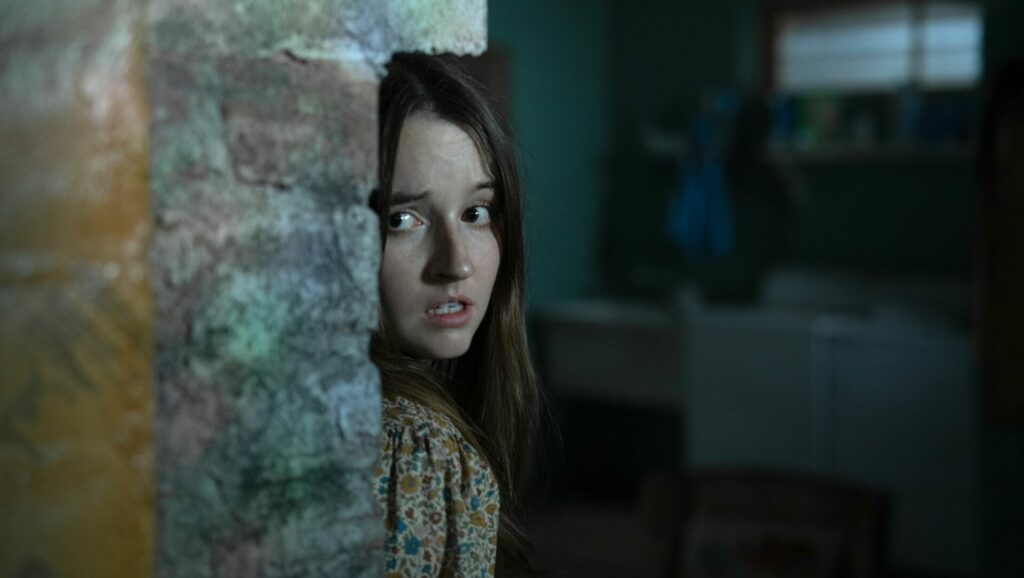
Any alien invasion movie instantly has the audience asking, ‘okay, what do they aliens look like?’ The temptation always seems to be towards overdesigning them so it was refreshing to not only have the look of the extraterrestrials revealed early but also that they are simple ‘Grays’. They are the classic design, seen on bumper stickers the world over, but treated seriously. I liked the choice, even though they were a bit rubbery. Even so, I could work out what the rubbery aliens were thinking at the end just from their movements and expressions so they couldn’t look too bad. I also don’t want to be the guy discounting good filmmaking and creative ideas just for the sake of moaning about some bad CGI but some of it was rough, especially with the little alien.
With the Grays as the basic model, I liked expanding outwards to see the variant aliens. The little one was the weakest design and probably the weakest part of the film overall. A chase with a silly little monster with its CGI jazz hands felt like a weird diversion that didn’t add anything. But the big aliens, wow did I love that. The reveal that it wasn’t on the roof but rather so tall it was standing behind the building was brilliant and its long spider-like legs were very creepy. The wider worldbuilding of the aliens being kept ambiguous was also a good call, with the unexplained sign language, the relationship between the Grays and the little throat aliens, the slightly bendy UFOs, and, you know, what their intentions were.
From the beginning of the film, it was pretty clear that the aliens would help Brynn overcome her personal issues. Except I was expecting this to be inadvertent. In fighting them off Brynn would accept herself and become accepted by the townsfolk. I was not expecting for the aliens to literally, purposefully help Brynn to overcome her issues. The squiggly throat possessor offers Brynn a fantasy, a falsehood, that she is able to reject by finally getting to tell a vision of her friend Maude that she’s sorry. She is able to accept what she has done. Then she kills part of herself, her old/shadow self, so she can escape that side of her and grow, but she also comforts that side of her as she died, which she hadn’t experienced herself since her mother died.
That moment with the doppelganger was a little rushed, maybe a sequence too many, but it is interesting to ponder. This all begins as accidental therapy by the aliens at first but then, through their interest in photographs and notes written by Brynn about Maude, they purposefully relive her memories alongside her and allow her to live, free from their control. Brynn kills an alien at the start of the film in much the same manner as she killed her childhood friend Maude and the aliens forgive her for this, something the humans could never do, completing the final step of Brynn’s emotional odyssey.
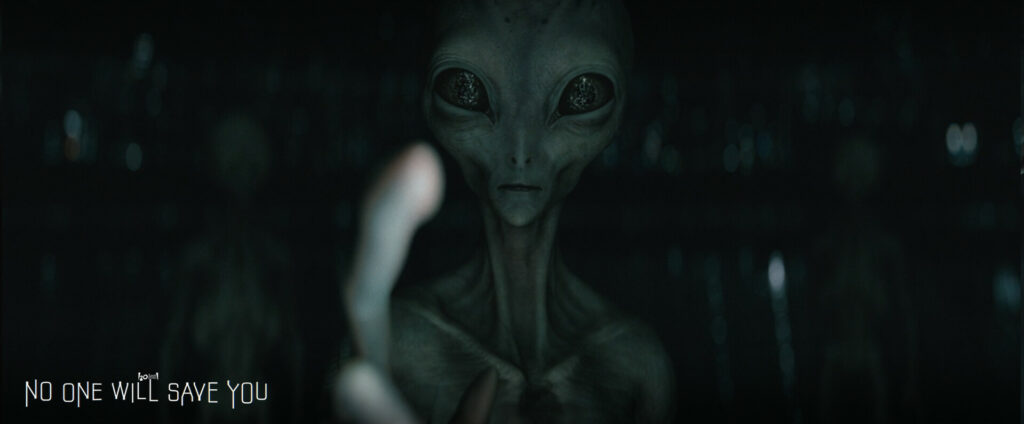
Which brings us to the Twilight Zone ending, which took me completely by surprise. It’s not the kind of denouement I was expecting but I’m so glad this is what we got. Brynn, finally living her best life, free from internal guilt and external shame, dancing with people enslaved by the aliens, the only true human left but enjoying the fact. Initially, I was happy for her. She lives in a reality that accepts her, but really it’s no reality at all. It’s just an extension of her house bubble; she’s living in her fake doll’s house town with real people as playthings. Is she at fault for accepting this, or is society itself at fault if this is the only way she can be happy. Should Brynn have been forgiven and allowed to live like this in the real world or does she not deserve forgiveness? Is this less of a Twilight Zone ending and more Black Mirror, that the reveal was Brynn was a villain after all and we shouldn’t have been sympathetic towards her.
Ultimately, the film leaves these questions hanging, being morally ambiguous and letting the audience itself decide on just how beautiful and sweet or creepy and repulsive the ending is. What a brilliant twist for the film to take in its unique final scene, cementing it as one of the year’s best.




